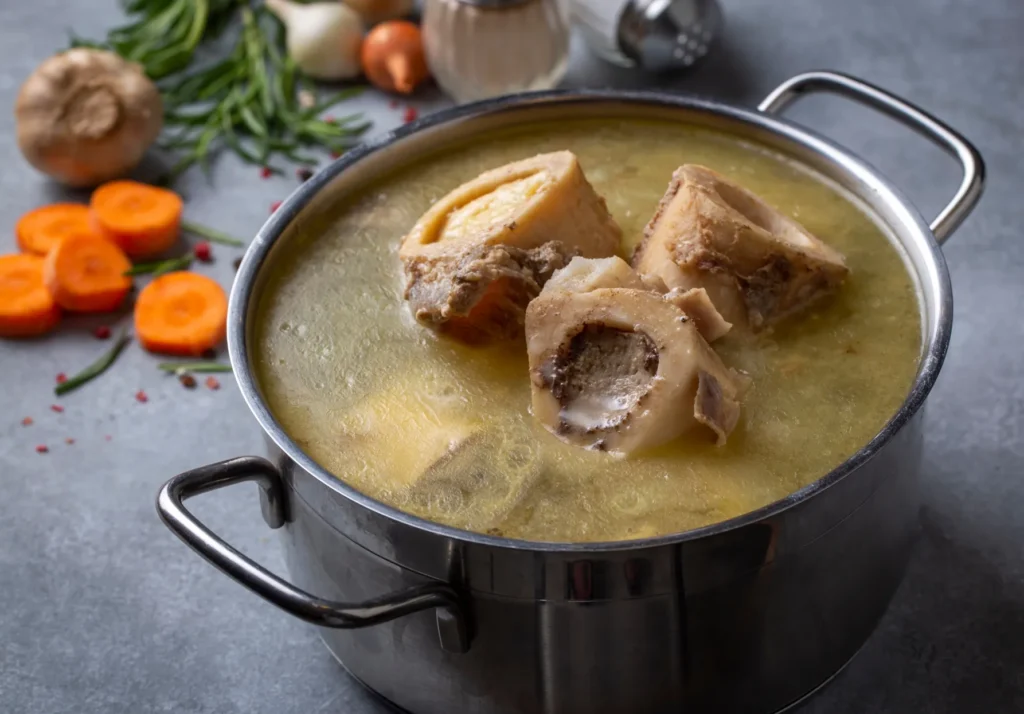Introduction: Understanding the Essence of Soup Bones
In the realm of culinary delights, soup bones often play a quiet yet crucial role. These humble ingredients, often overlooked, hold within them a wealth of nutrition and flavor that can transform a simple broth into a hearty, nourishing meal. Let’s delve into the world of soup bone’s and uncover their secrets.
What Are Soup Bones?
Soup bone’s , also known as stock bones or marrow bones, are typically the remnants of animal carcasses after meat has been removed. These bones, often rich in marrow, collagen, and minerals, serve as the foundation for flavorful broths and stocks.
Types of Soup Bones
There are various types of soup bone’s , each offering unique flavors and nutritional benefits. Common types include:
- Beef Bones: Rich in marrow and collagen, beef bones impart a robust flavor to soups and stocks.
- Chicken Bones: Chicken bones, including backs, necks, and feet, add depth and richness to poultry-based broths.
- Pork Bones: Pork bones, especially neck bones and hocks, provide a savory sweetness to soups and stews.
The Nutritional Benefits of Soup Bones
Beyond their culinary appeal, soup bone’s boast an array of health benefits. Here are some key nutrients found in soup bone’s :
Collagen
Soup bone’s are abundant in collagen, a protein that supports joint health, promotes skin elasticity, and aids in digestion.
Minerals
Soup bone’s contain essential minerals like calcium, magnesium, and phosphorus, which contribute to bone strength and overall vitality.
Gelatin
When simmered, the collagen in soup bone’s transforms into gelatin, which supports gut health and promotes satiety.
How to Use Soup Bones in Cooking
1. Making Bone Broth
To extract the maximum flavor and nutrition from soup bone’s , consider making homemade bone broth. Simply simmer the bones with aromatic vegetables, herbs, and water for several hours to create a flavorful base for soups, sauces, and gravies.
2. Enhancing Soups and Stews
Add soup bone’s to your favorite soup or stew recipes to impart richness and depth of flavor. Remove the bones before serving to ensure a smooth texture.
3. Roasting for Flavor
Before using soup bone’s in recipes, consider roasting them in the oven to enhance their flavor. This step adds a depth of caramelization that elevates the final dish.
Conclusion: Embracing the Versatility of Soup bone’s
In conclusion, soup bones are not just culinary ingredients but nutritional powerhouses that deserve a place of honor in every kitchen. By unlocking their potential, we can create nourishing meals that delight the senses and support overall health.
FAQs
Are soup bones the same as marrow bones?
While marrow bones are a type of soup bone, not all soup bone’s contain marrow. Marrow bones specifically refer to bones with a center filled with soft, nutrient-rich marrow.
Can I reuse soup bone’s to make multiple batches of broth?
Yes, you can reuse soup bone’s to make multiple batches of broth. However, the flavor and nutritional content may diminish with each subsequent batch.
Are there any vegetarian alternatives to soup bone’s ?
While not identical, you can achieve a similar depth of flavor and nutritional profile using vegetable scraps, such as onion skins, carrot tops, and celery ends, to make vegetable broth.
How long should I simmer soup bone’s to extract maximum flavor?
For optimal flavor extraction, simmer soup bone’s for at least 8-12 hours. However, longer simmering times can further enhance the richness of the broth.
Can I freeze soup bones for later use?
Yes, you can freeze soup bones for later use. Simply wrap them tightly in plastic wrap or aluminum foil and store them in the freezer for up to 3 months.







